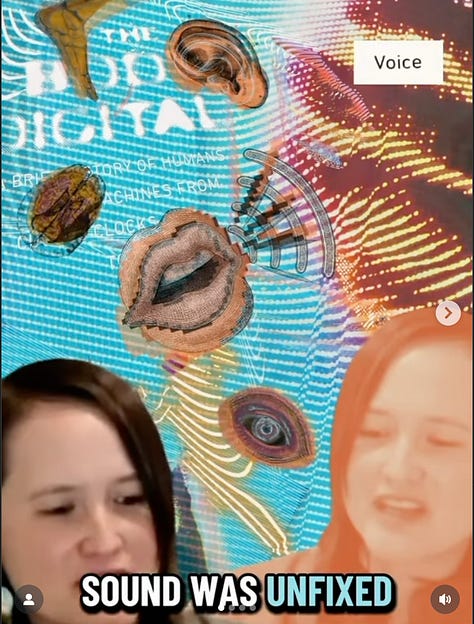Vanessa Chang
Writer, scholar, curator, and educator.



Vanessa Chang is a writer, scholar, curator, and educator who builds communities and conversations about our virtual and physical encounters with media and technology.
Vanessa Chang builds communities and conversations about art, technology, people, and planet. She writes, curates, and teaches about new and old media, the history and philosophy of technology, design, disability and creative access, cities, comics, animation, circuses, and more.
She is Director of Programs at Leonardo, the International Society for the Arts, Sciences, and Technology. She earned a Ph.D. in Modern Thought and Literature from Stanford University, where she was a Geballe Fellow at the Stanford Humanities Center and also ran the Graphic Narrative Project. She’s also taught in Visual & Critical Studies at California College of the Arts and was lead curator with CODAME Art & Tech. She grew up in Singapore and Australia and is now based in San Francisco.
Her first book, The Body Digital: A Brief History of Humans and Machines, from Cuckoo Clocks to ChatGPT, is forthcoming 4 November 2025.
Vanessa Chang, has been the art curator at CODAME.
She joined us in 2017 curating the 3D Web Fest [2017] in San Francisco. In no time, she fit the CODAME culture and became one of the most critical team members to build such a successful ART+TECH event.
She also brought the CODAME 3D Web Fest to the international stage, curating a similar San Francisco experience, with a great respect for the local ART+TECH scene in Germany.
After her extraordinary job in 2017, Vanessa is continuing to curate our biggest event of the year CODAME ART+TECH Festival [2018] codenamed #ARTOBOTS
In Vanessa’s own words:
Automation has a long and curious history. For hundreds of years, inventors of clockwork automata and philosophers of artificial life have explored the horizons of human understanding through the lens of these mechanical others.
The industrial revolution saw the introduction of automated processes into our factories, our homes, our art, and our lives. Even as automation has entered the digital spheres of human activity, the cultural legacies of these early developments remain visible.
As automated processes permeate our existences, from shopping algorithms to self-driving cars, I see our cultural conversations about them often moving between celebratory and apocalyptic poles. In my doctoral research, I saw new media art as a space to examine the complexities of our relationships with technology.
Through this festival, I want to explore the imaginative possibilities of our collaborations with automata, whether algorithms, robots or AI. As curator, I want to showcase how automation might expand our repertoires of moving, seeing, and feeling, or challenge long-held perspectives about the parameters of human perception.


![3D Web Fest [2017]](https://substackcdn.com/image/fetch/$s_!sbHs!,w_140,h_140,c_fill,f_auto,q_auto:good,fl_progressive:steep,g_auto/https%3A%2F%2Fbucketeer-e05bbc84-baa3-437e-9518-adb32be77984.s3.amazonaws.com%2Fpublic%2Fimages%2F454d8ec9-98f1-4fc8-884a-d74522d97462_564x282.png)
![3D Web Fest [2017] - Germany](https://substackcdn.com/image/fetch/$s_!ik4m!,w_140,h_140,c_fill,f_auto,q_auto:good,fl_progressive:steep,g_auto/https%3A%2F%2Fbucketeer-e05bbc84-baa3-437e-9518-adb32be77984.s3.amazonaws.com%2Fpublic%2Fimages%2F221c7755-cc91-4664-9072-5758638c21df_1600x900.png)
![CODAME ART+TECH Festival [2018]](https://substackcdn.com/image/fetch/$s_!KG2-!,w_140,h_140,c_fill,f_auto,q_auto:good,fl_progressive:steep,g_auto/https%3A%2F%2Fbucketeer-e05bbc84-baa3-437e-9518-adb32be77984.s3.amazonaws.com%2Fpublic%2Fimages%2F814c7073-22a1-4187-8365-3e39a852c988_1600x2262.jpeg)